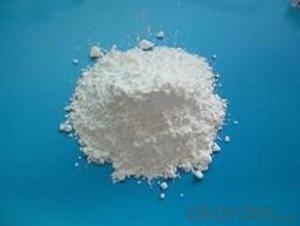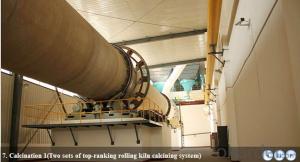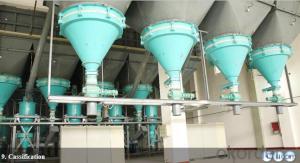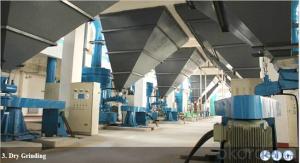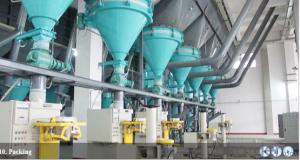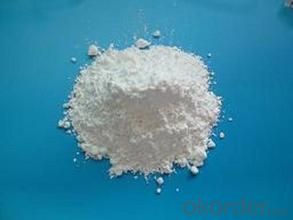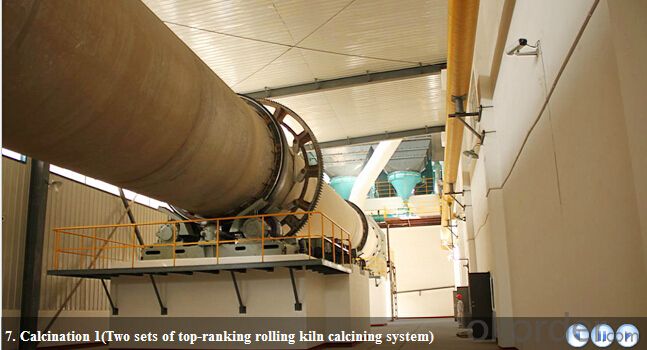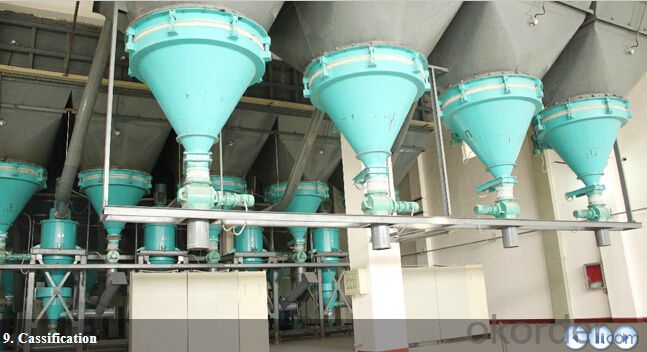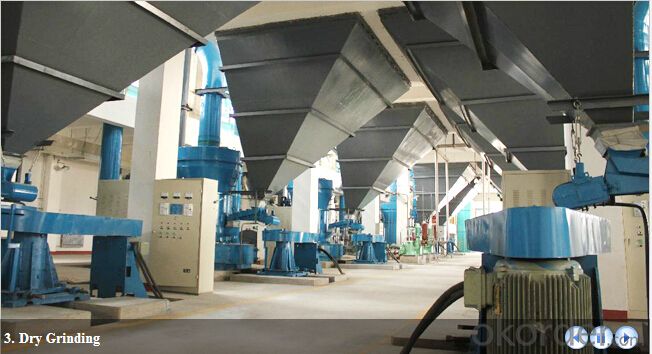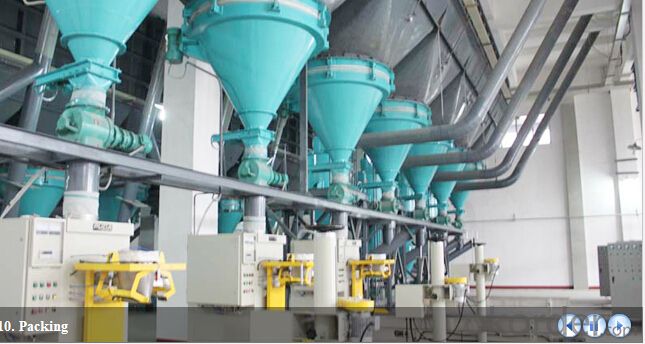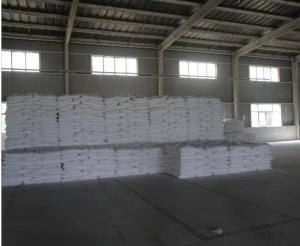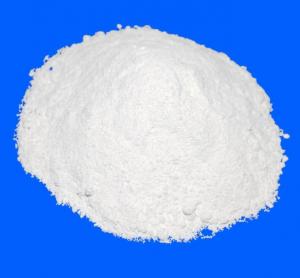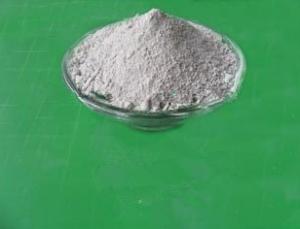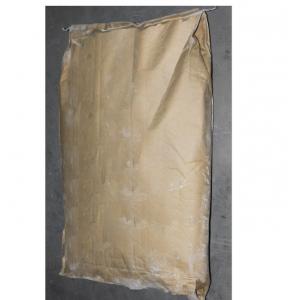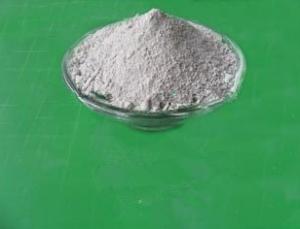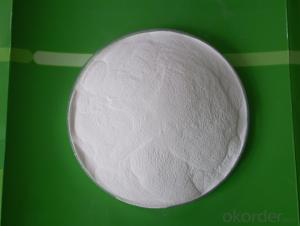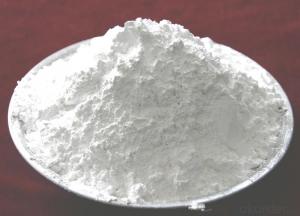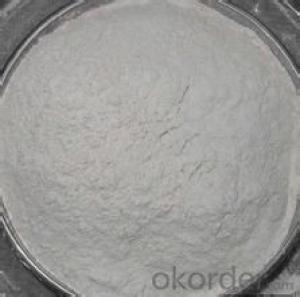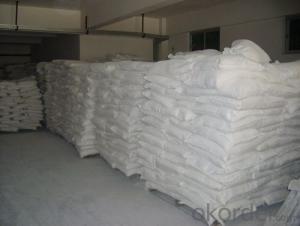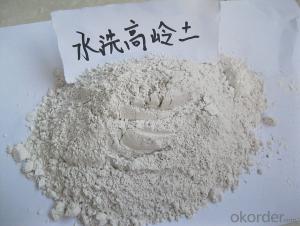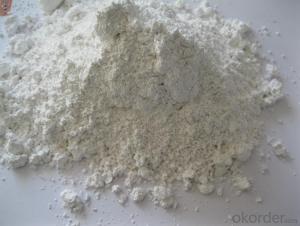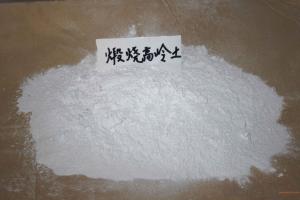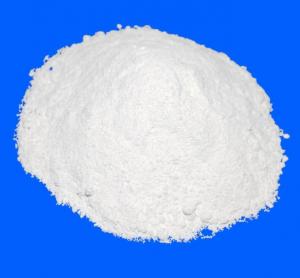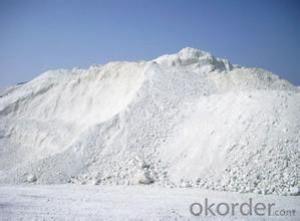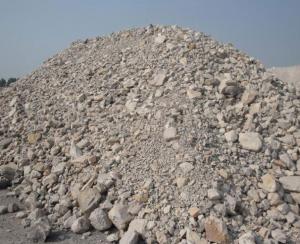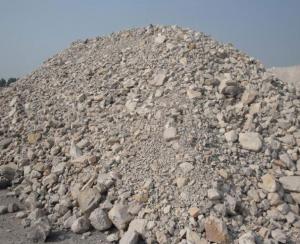CALCINED KAOLIN FOR Color (GBCK-95/96) National Standard
- Loading Port:
- Tianjin
- Payment Terms:
- TT OR LC
- Min Order Qty:
- 25 m.t.
- Supply Capability:
- 12000 m.t./month
OKorder Service Pledge
OKorder Financial Service
You Might Also Like
1. Benefits and Application
The GB-CK series of Kaolin based pigments are produced through delamination,
calcination and classification. The well-controlled processes ensure the GB series have no coarse particles and maintains an absolute minimum of 325 mesh residue, so the end user can achieve a high Hegman grind. The GB series pigments also have high brightness, strong hiding powder and superior dispersibility, and it is widely applied in latex paint, powder coating and electrophoresis coating.
Its main benefits are:
It’s the best extender of titanium dioxide with excellent opacity that can
improve efficiency and cut costs by partly replacing titanium dioxide;
It can easily disperse in water based systems;
It offers superfine particle and with excellent anti-settling property; It is inert to most acids and
alkaline at ambient temperature and offers good anticorrosive capabilities.
2. Typical Physical Properties
Item | GB-CK90 | GB-CK92 |
Brightness(T457) | 90.5%min | 92%min |
Particle Size (0-2micron)% | 50+/-2 | 60+/-5 |
Particle Size (0-10micron)% | 94% | 97% |
Refractivity | 1.62 | 1.62 |
Screen residue (325 mesh %) | 0.01max | 0.01max |
Oil Absorbency (g/100g) | 35+/-5 | 50+/-5 |
Dispersion (micron) | 55max | 50max |
pH | 5.5-7.0 | 5.5-7.0 |
Bulk Density (kg/m3) | 600 | 500 |
Specific Gravity (kg/m3) | 2600 | 2600 |
Moisture (%) | 0.5max | 0.5max |
3. Typical Chemical Properties
SiO2(%) | Al2O3(%) | Fe2O3(%) | TiO2(%) | CaO(%) | MgO(%) | CuO(%) | K2O(%) | Na2O(%) | MnO(%) |
52+/-2 | 45+/-2 | 0.50max | 1.5max | 0.4max | 0.2max | 0.004max | 0.05max | 0.15max | 0.004max |
4.Application
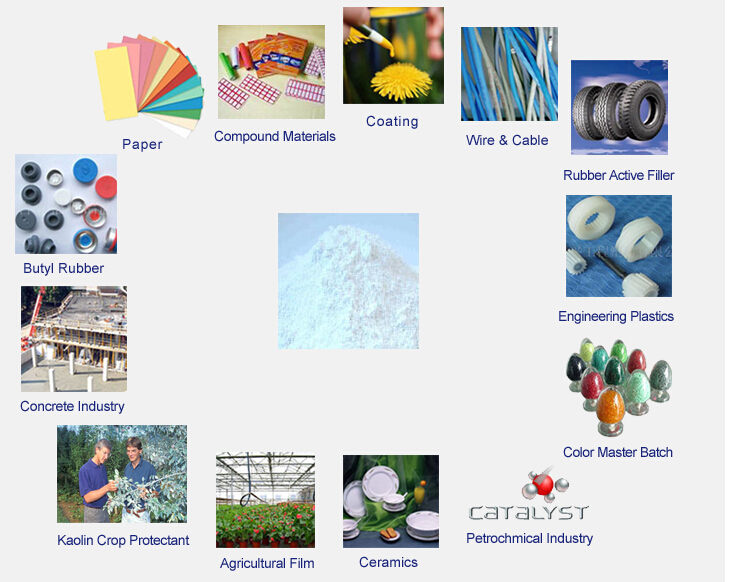
- Q: The difference between bauxite, kaolin and clay
- Aluminum ore is actually refers to the industry can use, in order to gibbsite, boehmite and diaspore as the main mineral composition of the ore collectively. Application of bauxite has two aspects of metal and non-metal is the best raw material for the production of metal aluminum, and it is also the main application areas.
- Q: How can we tell if there's kaolin in that hill?
- Having plasticity; wet soil can be molded into various shapes without breaking, and can remain unchanged for a long time.Specific or to pass the test. If you need to test, you can contact me, we analyzed the testing center, the phone is the user name.
- Q: Is kaolin a soil or a rock?
- Kaolin is a kind of clay formed by weathering, leaching, residual and exogenic deposition of aluminosilicate rocks. It is also the product of the alteration of hydrothermal fluid to the surrounding rock.
- Q: The cosmetic effect of kaolin?
- Kaolin is a nonmetal mineral, good quality products for whiteness high component, high temperature resistant, soft texture, good acid and alkali resistance, no stimulation to the skin, and has certain adsorption ability, remove skin dirt, grease on the skin absorption and waste etc..
- Q: What is kaolin clay?
- The clay used for casting is divided into two categories: plain clay and bentonite according to their mineral composition
- Q: How can kaolin be removed from iron?
- Superconducting electromagnetic iron removal, the effect is very good, but the equipment input and operating costs are very high, a factory in Guangxi bought one, about 24 million yuan, the operating costs are not clear
- Q: Which mixer can be more evenly dispersed kaolin slurry?
- If you need to stir some hard foods, such as ice like, need to add the juice stir together, it is recommended to select a large power mixer, power stirring power will be stronger and stronger, stir hard foods are also easier and less laborious. So, it is best to choose power at 700W power mixer, will be more dynamic.
- Q: What is the significance of the target in kaolin?
- The project refers to the kaolin kaolin through the screen mesh. The purpose is defined as the number of holes per square inch mesh. 200 mesh for each square powder particle size known particle size. As the particle shape is very complex, usually there are several screening methods, such as particle size, sedimentation particle size, equivalent volume size, equivalent surface area, particle size and so on.
- Q: The difference between calcined clay and calcined kaolin
- Generally speaking, the strengthening effect of hard, clay on hardness, elongation strength, tensile strength or wear resistance is larger than that of soft clayBut the hard clay and soft clay (hard Claysoft clay) is mixed with rubber as raw material mixed hardness, tensile strength training plus sulfur product for compliance, which can not be a clear division, but hard clay particles were relatively small, at 2 below for more than 80%, soft clay is about 50%. The proportion of around 2.6. The general kaolin is acidity, pH value is about 4~5, but also the use of alkali or amine treatment, the pH value tends to alkaline. Kaolin better than calcium carbonate in the tensile strength and hardness increase and mechanical strength has good performance, but the degree of poor white, permanent compression deformation, and sulfur is slow (because of the pH value of 4.5.5, delay the sulfur addition tendency), glycerol, ethylene glycol, can amine (Glycol) as activating agent to improve the properties of sulfur. The clay at suitable temperature (600~800 DEG C) loses water of crystallization calcination (OH) the crystal structure collapse, in order to improve live Because the free ion (ion) is adsorbed and fixed, the insulation effect can be improved, and the treatment can decompose the organic matters and increase the whiteness, and because the size is neat, the dispersion is good
- Q: The difference between kaolin and talc in rubber
- Talc powder, English name PULVISTALCI, white or white like, fine, sand free powder, hand touch greasy. Odorless, tasteless. This product is insoluble in water, dilute ore, acid or dilute hydrogen alkali solution. This product is magnesium silicate mineral!
Send your message to us
CALCINED KAOLIN FOR Color (GBCK-95/96) National Standard
- Loading Port:
- Tianjin
- Payment Terms:
- TT OR LC
- Min Order Qty:
- 25 m.t.
- Supply Capability:
- 12000 m.t./month
OKorder Service Pledge
OKorder Financial Service
Similar products
Hot products
Hot Searches
Related keywords
